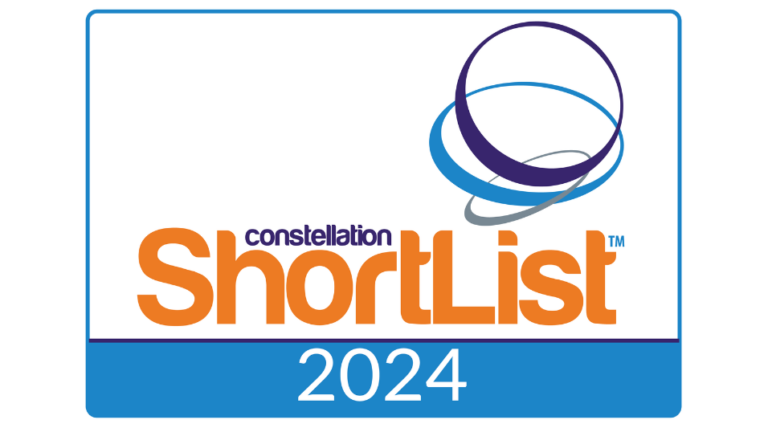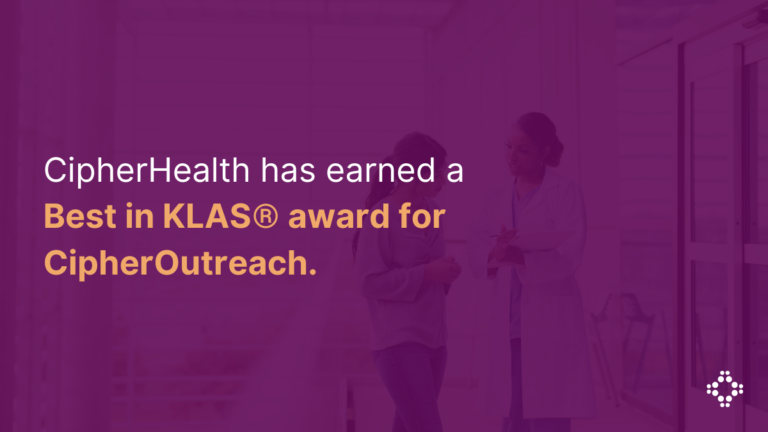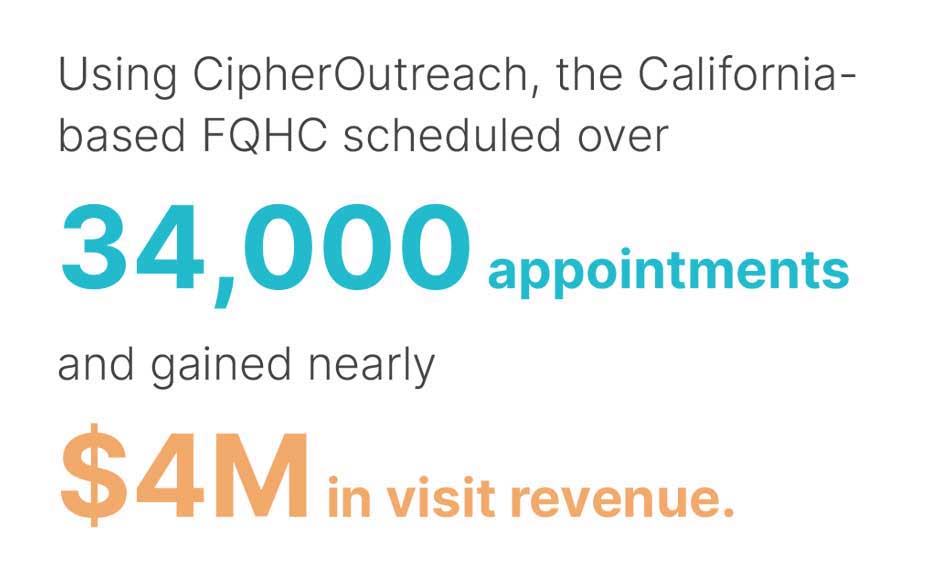

Address Care Gaps and Increase Appointment Volume with CipherOutreach
California-based FQHC reaches underserved populations and generates $4M in visit revenue
Background
One primary care provider, serving over 30,000 unique patients annually, implemented CipherOutreach to reach specific populations who were overdue for care. The community-based healthcare provider is a FQHC (Federally Qualified Health Center) located in California. FQHCs are monetarily incentivised to engage patients assigned to them through their health plan partners, namely Medi-Cal — California’s Medicaid program that provides medical services to low-income people at little or no cost. After an initial proof of concept period, CipherOutreach went live across their multiple locations in late 2019. An analysis of the provider’s reporting data from 2021 showed marked increases in scheduled appointments, resulting in nearly $4M in visit revenue across three outreach campaigns.
Challenge
As a FQHC, the provider offers care to medically underserved and vulnerable populations, many of whom may be uninsured or living below the poverty line. FQHCs play a critical role in delivering affordable, high-quality healthcare services to patients who may not be able to access medical care elsewhere. To address care gaps with specific populations and promote early detection of health issues, the primary care provider needed a solution that would allow them to bring patients in without the need for additional staff or manual outreach.
Goal
The provider sought to increase access and healthcare delivery both within their health centers and in the community. With automated outreach, they could reach more patients for seasonal immunizations, cancer screenings and diabetes care, with a focus on engaging their assigned but unseen patients. The provider would receive $150-$200 per visit.
Solution
With CipherHealth, the primary care provider executed on three Care Gap Outreach Campaigns — Initial Health Assessments (IHA), Cancer Screenings and Diabetes — to bring in unseen patients or those who may not otherwise be able to afford care. As a FQHC, they receive reimbursement from Medi-Cal for the services they provide to eligible Medi-Cal beneficiaries. This helps ensure this community-based care provider, and others like it, have the resources they need to deliver care regardless of a patient’s ability to pay, which is particularly important for individuals who are uninsured or underinsured.
Impact
In one year, this California-based provider scheduled over 34,000 appointments and gained nearly $4M in visit revenue. Crucially, these appointments were with patients who otherwise may not have come in to be seen or had access to care. This positive outcome speaks not only to the effectiveness of CipherOutreach, but to the benefits of FQHCs and Medi-Cal in expanding access to affordable health care to underserved communities.
Conclusion
This primary care provider’s success with CipherOutreach serves as a model for other FQHCs seeking to increase their appointment volume and recover revenue. The ability to reach the wider community and bring them in for care using automated outreach promotes positive health outcomes and establishes trust with new or recently unseen patients. This can help encourage patients to seek care with the health system again when they need it next.





